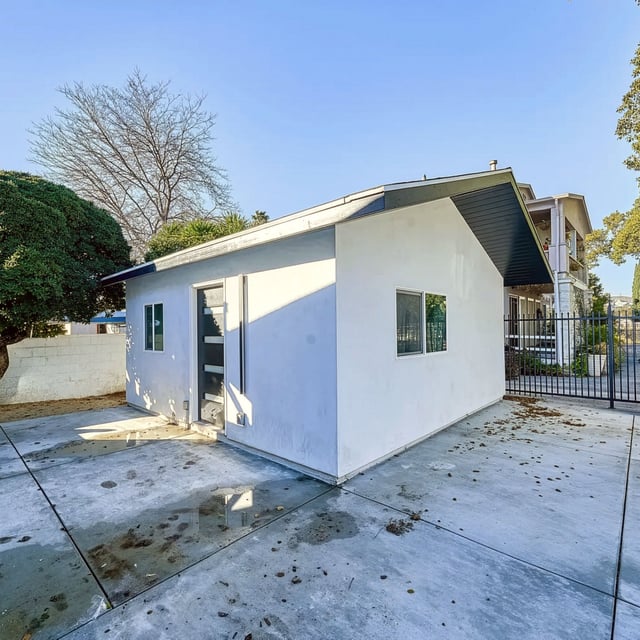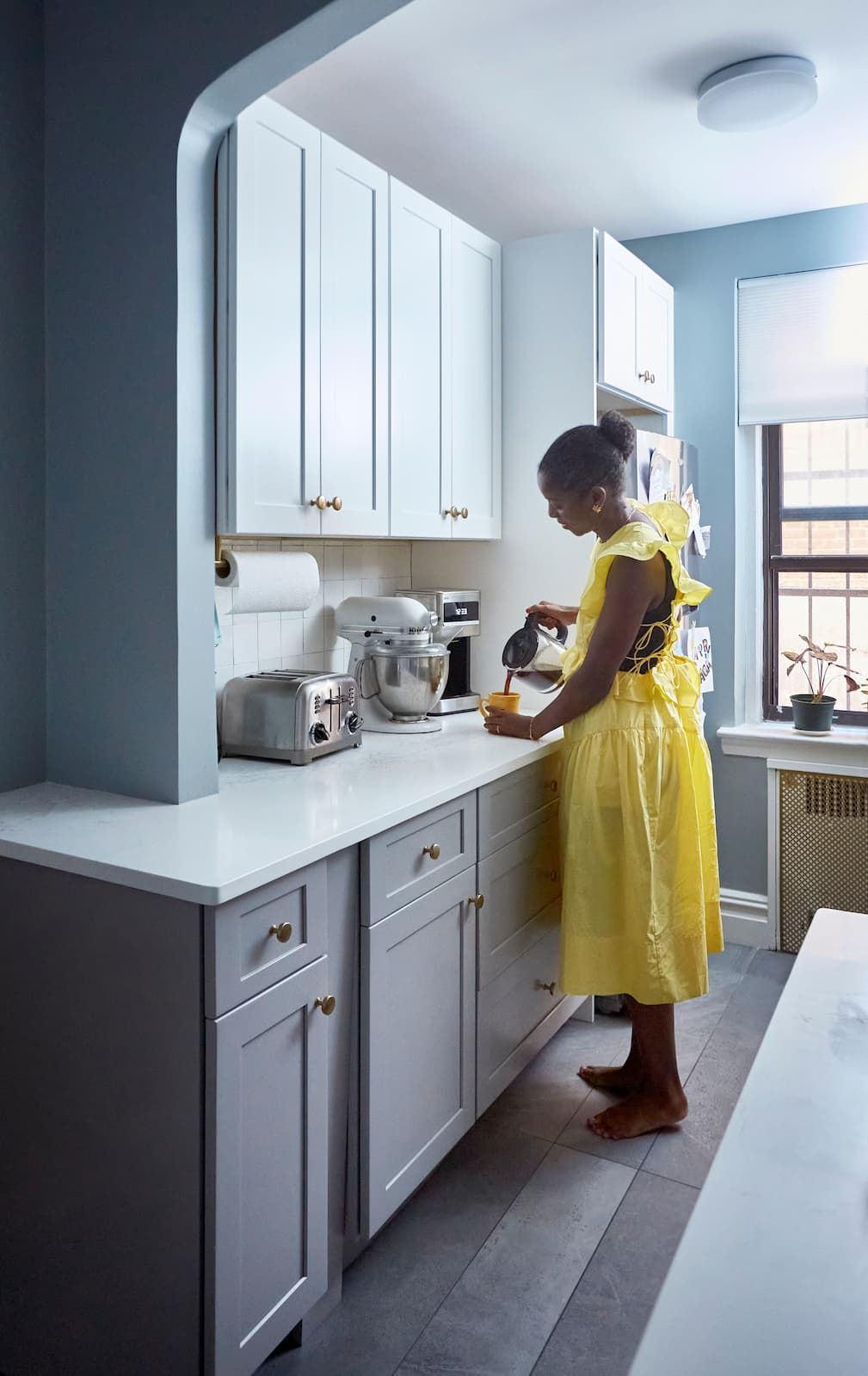
Home Addition
How Much Does It Cost to Build or Remodel a Guest House?
11.22.2025


In This Article
Accessory dwelling units—better known as ADUs—are reshaping what’s possible for property owners in California. Whether you’re picturing an income-generating backyard home, a suite for aging parents, or a fully independent space for adult children, the appeal is unmistakable. Across the state, ADUs are being recognized as a powerful way to boost property value, provide flexibility, and help address California’s housing shortage.
According to the National Association of Realtors, homes with ADUs in the U.S. sell for about 35% more on average than those without. While that figure is impressive, California’s unique blend of legal reforms and surging housing costs means ADUs here can be even more impactful.
Understanding how much value an ADU adds takes more than a quick calculation—it’s about market dynamics, type of unit, and how you plan to use it.
A surge of recent California policy changes at the state and local level has worked in homeowners’ favor, making it easier than ever to plan, permit, and complete an ADU project. Faster permit approvals, pre-approved designs, and more flexible zoning have all helped reduce friction in the process, so adding livable space doesn’t have to mean years of waiting or a maze of red tape.
In cities like Berkeley, new legislation is even paving the way for ADUs to be sold as independent units, expanding what’s possible for both investors and longtime property owners.
The cost of buying or renting a home in much of California is at an all-time high. For example, a one-bedroom apartment in San Francisco has a median monthly rate of $3,400. Other California communities like San Jose and San Diego offer some relief—with median rates of $2,740 and $2,300, respectively—but are still much higher than national averages.
This means that California homeowners value ADUs more than ever for a variety of reasons:
Turn your renovation vision into reality
Get matched with trusted contractors and start your renovation today!
Find a Contractor
|
ADU Type |
Cost Range |
Avg. Size (sq. ft.) |
ROI Potential |
|
Garage Conversion |
$50k–$100k |
300–600 |
60–80%+ |
|
Attached ADU |
$200k–$400k |
400–800 |
60–70%+ |
|
Above-Garage ADU |
$150k–$300k |
400–800 |
50–70% |
|
Detached ADU |
$200k–$500k+ |
400–1,200 |
50–70% |
Garage Conversion: A garage conversion transforms an existing garage structure into a livable accessory dwelling unit. This type of ADU—particularly popular in Los Angeles—typically retains the original garage footprint while adding insulation, windows, plumbing, and either a kitchenette or full kitchen and bathroom. It’s often one of the most cost-effective options, making use of existing space while quickly increasing property value and utility. However, this type of ADU tends to have a lower rental rate than all other options.
Attached ADU: An attached ADU is a new or converted living space that’s physically connected to the main home, often through shared walls, yet has its own private entrance, kitchen, and bathroom. These units can be additions to the side or rear of a house, or conversions of unfinished basements, attics, or sunrooms. Attached ADUs provide added flexibility and privacy, and are popular where property lines or backyard space are limited.
Above-Garage ADU: An above-garage ADU is a fully self-contained living unit built above an existing or newly constructed garage. This type of ADU offers efficient land use and maintains parking or storage space below, while creating separate living quarters upstairs. Above-garage ADUs often appeal to renters seeking privacy and a slightly elevated view and can be designed with a separate entrance for complete independence.
Detached ADU: A detached ADU is a stand-alone structure located on the same lot as the primary residence but separate from the main home. It includes its own kitchen, bathroom, and living areas, offering the greatest degree of privacy and independence for occupants. Detached ADUs are often compared to guest houses and can be tailored for long-term rental, family use, or multigenerational living. Unsurprisingly, this style of ADU provides the most value to a California residence.
Undeniably the most “pro-ADU” state in the country, California supports building these structures by making them easier to permit and by offering many funding programs for homeowners—like grants that can help cover planning and construction costs.
For example, the CalHFA ADU Grant Program provides up to $40,000 to help pay for predevelopment costs, and there are additional state and local programs (like loans or forgivable loans) especially for owners who will rent ADUs to low- or moderate-income households. State law now requires cities and counties to develop plans and offer incentives to encourage affordable ADUs, and both state and local governments provide technical and financial assistance to make ADUs accessible for more homeowners across California.
For a more detailed look at financing and California state policies, click here.
Not sure how to begin your renovation?
Get free, expert guidance from a dedicated Block Renovation Consultant who can help you navigate proposals, timelines, contractor selection, and more.
Book A Free Consultation
By now, it should be obvious that there are numerous ways ADUs can prove their worth to Californian households—-whether that is as long-term rentals or AirBNBs, accommodating multigenerational household needs, or appealing to future homebuyers. To maximize your ADU’s ROI:
Design a Home That’s Uniquely Yours
Block can help you achieve your renovation goals and bring your dream remodel to life with price assurance and expert support.
Get Started
As ADUs continue to transform what’s possible for California homeowners, it’s never been more important to have trusted guidance on your side. Understanding how much value an ADU can add—and making the right decisions on design, permitting, and investment—calls for clarity and vetted expertise.
Block Renovation connects property owners with experienced professionals every step of the way, from evaluating your ADU’s ROI potential to refining your plans and ensuring every detail meets California’s latest standards. With the right team, maximizing ADU value isn’t just an idea—it becomes a reality that supports both your present goals and long-term vision for your property.

Written by Block Renovation

Renovate confidently with Block
Easily compare quotes from top quality contractors, and get peace of mind with warranty & price protections.
Thousands of homeowners have renovated with Block

4.5 Stars (100+)

4.7 Stars (100+)

4.5 Stars (75+)

Home Addition
How Much Does It Cost to Build or Remodel a Guest House?
11.22.2025

Home Addition
Bungalow Addition Ideas & Costs: Add More Space to Your Bungalow
11.14.2025

Home Addition
Cape Cod Additions - How to Do it Right
11.14.2025

Home Addition
Pembroke + Hanover, MA Home Additions Guide
11.11.2025

Home Addition
How Much Value Does an ADU Add in California Markets
10.14.2025
Renovate confidently